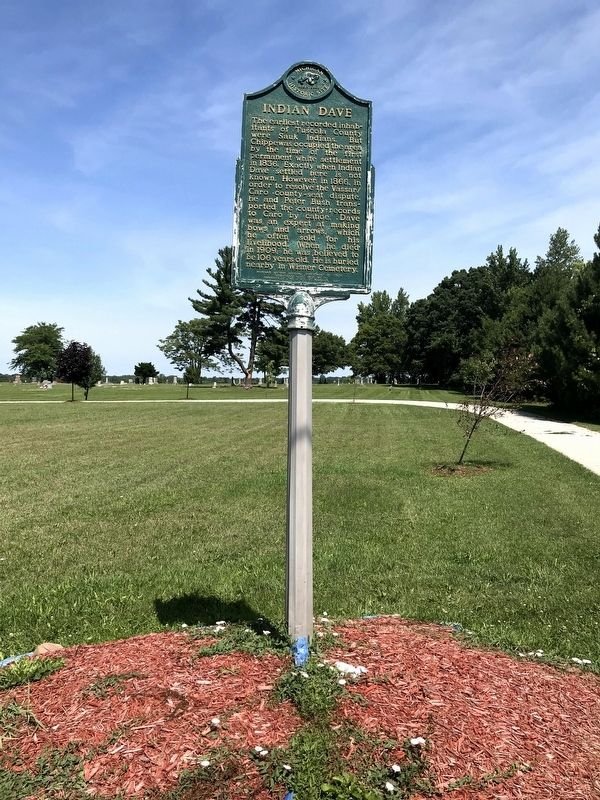Dibbleville
Clark Dibble came here from New York State in 1834 and laid claim to forty acres of government land. Known as Dibbleville, this area was Fenton’s original business district. It encompasses the A. J. Phillips Library, two churches and two commercial blocks.
Davison Farmstead
Jonathan Davison (1795-1865), a native of Livingston County, New York, purchased 160 acres of land here in 1831. His son, John W. Davison, a farmer and carpenter, completed the rear portion of the present structure in 1855. He enlarged it to its present size in 1870.
Court Street United Methodist Church (First Methodist)
In 1841 the Genesee County Board of Commissioners deeded this property to what became the First Methodist Episcopal Church, the oldest organized religious group in the city.
Congregational Church
In 1833 eleven people established the First Congregational Church of Grand Blanc. The congregation, which held its early services in homes and, later, schoolhouses, built their first house of worship in 1855.
Community Presbyterian Church
The Community Presbyterian Church grew out of the Civic Park community, which General Motors established in 1919 through its Modern Housing Corporation to provide housing for its Flint workers. Several Presbyterian families in the area first met in December 1919 for a Christmas party, and by 1921 the group had grown so large that a formal Presbyterian church was organized.
Clio Depot
In 1862 the Flint and Pere Marquette Railroad built its original 26.1-mile section of track from Saginaw to Mount Morris. It selected Clio, originally known as Varna, as a railroad station location. The area around Varna was covered with white pine. The railroad thrived on the shipment of logs, lumber, and wood products.
Civic Park
In 1916, as a flood of new workers for Flint’s automobile factories caused housing shortages, the directors of the Flint Board of Commerce formed the Civic Building Association. The association had built 133 houses on 400 acres of farmland.
Charles W. Nash
This Queen Anne-style house, built circa 1890, was owned by automotive pioneer Charles W. Nash (1864-1948).
Buick Motor Company
Flint’s Durant-Dort Carriage Company assumed management of Buick in November. In 1905 Durant moved assembly operations briefly to Jackson, then began construction of a large Buick complex on this site. Three years later Buick led U.S. automobile production, manufacturing 8,820 vehicles.
Brent Creek United Methodist Church
The church, which was originally located slightly west of this site, was moved here in 1940. The Gothic-inspired, wood frame building has undergone only minor changes since its relocation.
Berston Field House & Playground
Berston Field House and Playground has served Flint citizens as an important recreation center since it opened in 1923. Designed by the Cambridge, Massachusetts, city planning firm of John Nolen, it was developed on land deeded to the city of Flint by members of the Neil J. Berston family in 1920.
Argentine Township Cemetery
Graves located here include those of pioneer families, such as the Murrays, Lobdells, Sutherlands, Algers, Lahrings and McCaslins, as well as veterans of seven different wars.
Applewood Estate
In 1952 Mott donated thirty-eight acres of the estate to Flint for the future site of Mott Community College. Applewood was listed in the National Register of Historic Places in 1979. In 1989 the Ruth Mott Foundation took ownership of the estate.
Juniata House
In 1851, Patrick McGlone (1810-1884) settled near here. Later, he built a one-story Greek Revival Style building that he named “Juniata House” where he provided lodging and food for travelers, as well as “good Barns” stocked “with hay and grain.” His family served travelers for fourteen years.
Indian Dave
Indian Dave was one of the last Chippewas to hunt, fish, and trap in the old manner in the Tuscola County area. Dave was born around 1803 and given the name Ishdonquit. When he died in 1909, he was believed to be 106 years old. He is buried nearby in Wisner Cemetery.
Gilford United Methodist Church
In 1889 Charles and Naomi Phipps donated land for a church building. Church members laid the cornerstone later that year. In 1968, through a merger with the Methodist denomination, the name became the Gilford United Methodist Church.
Frankenhilf
In 1849 Pastor Ferdinand Sievers of Bay County purchased over fifteen hundred acres of virgin forest here in Tuscola County to establish a colony of immigrants from revolution-torn Germany. They named their community Frankenhilf, combining Franconia, a district of Bavaria, and hilf, meaning assistance.
First Presbyterian Church of Caro
For the first year, this small group of Presbyterians held their worship and prayer services in the homes of members. Then in 1880, they erected their first house of worship on Lincoln and Pearl Streets. It has had no structural alterations since construction. A regal structure, it features a corner tower and stained glass windows.
Elkland Township Hall
This hall was built in 1881 as the center of government activity for Elkland Township. Erected at a cost of twenty-six hundred dollars, it was the first brick structure in Cass City.


















